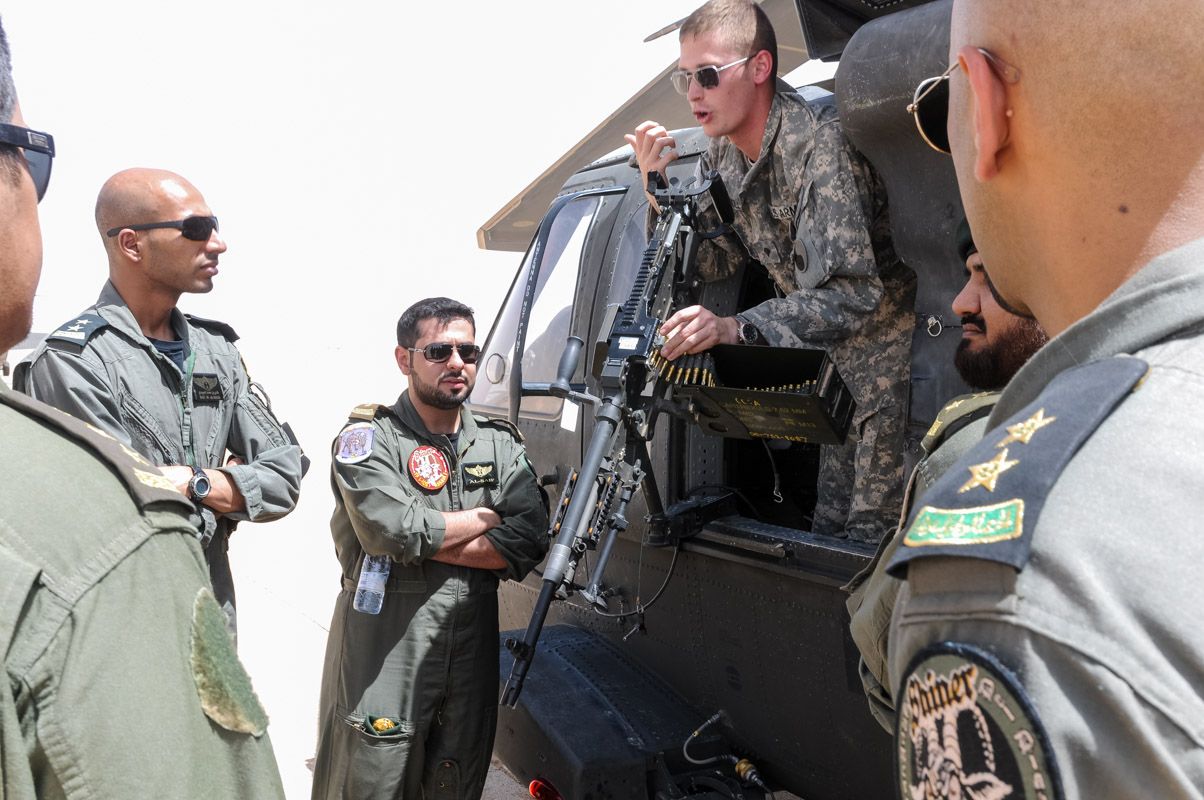
When the United States Army modernized, trading horses for helicopters, jeeps and tanks, the ground and air cavalries worked to retain much of the horse cavalry’s distinctive traditions. The 6th Squadron, 17th Cavalry Regiment is steeped in history and tradition.
It made history once again, by being the last air cavalry to leave Iraq. The 6-17 traces its lineage to F Troop, 17th Cavalry, the last ground cavalry unit to leave Vietnam.
Toward the end of their Iraq deployment, troopers from the 6-17th CAV received their combat spurs during awards ceremonies at Camp Taji, Iraq, Nov. 12-19, 2011.
The 6-17th is based at Fort Wainwright, Alaska. Spurs have been a symbol of the cavalry since the mid- 1800s. The Army began the transition from the horse cavalry in World War I to a fully mechanized cavalry in World War II. The 26th Cavalry Regiment of the Philippine Scouts was the last horse cavalry unit in the Army to fight while mounted during World War II.
Deploying in support of a cavalry unit, Soldiers are awarded gold spurs. Soldiers earn silver spurs through a “Spur Ride,” a test of cavalry-Soldier skills and proficiencies.
“It feels good to be acknowledged for the things you do. It’s too easy to get overlooked,” said Spc. Kieasha Farbs, an automated logistical specialist in F Co., about receiving her spurs. “It felt great; made me feel like I’m a part of the CAV.”
“From the old horse cavalry, if you’re a new cavalryman that showed up to a unit you have not proven yourself or your abilities to ride your horse. So he would be given a shaved-tail horse — a horse that has had its tail shaved off to allow a new rider to ride it a little easier,” said Chief Warrant Officer Allen Mays, squadron master gunner. “As you proved yourself, you would then get a horse with a full tail and obtain your spurs.”
Upon obtaining spurs, according to horse cavalry traditions, the new cavalryman would get a smack on the rear end to send them off to ride.
During the ceremonies, many Soldiers were awarded Combat Action Badges, Air Medals and Army Commendation Medals with the “V” device for valor during a May 2011, indirect fire attack.
Early on a May morning, Camp Taji received more than several rounds of indirect fire.
Shortly before the attack, a B Troop scout weapons team returned to aircraft parking for maintenance. When the first rounds impacted, Chief Warrant Officers Brian Jacobson and Michael King’s OH-58D helicopter immediately took off. They flew in the direction of the indirect fire to thwart the enemy’s actions. A maintenance team assessed and repaired a second helicopter to get it into the fight.
The actions by the aircrews and maintenance team enabled the scout weapons team to be the first U.S. forces on scene in response to the attack, causing the enemy to flee.
“The aircrews and maintainers of Bravo and Delta Troop 6-17 CAV showed personal courage under fire, extreme dedication to duty and selfless service,” said Lt. Col. Michael McCurry, squadron commander. “Their actions are not only the embodiment of the Army values but also demonstrate what it means to be a Cavalry Soldier in the 6th Squadron, 17th U.S. Cavalry Regiment.”








